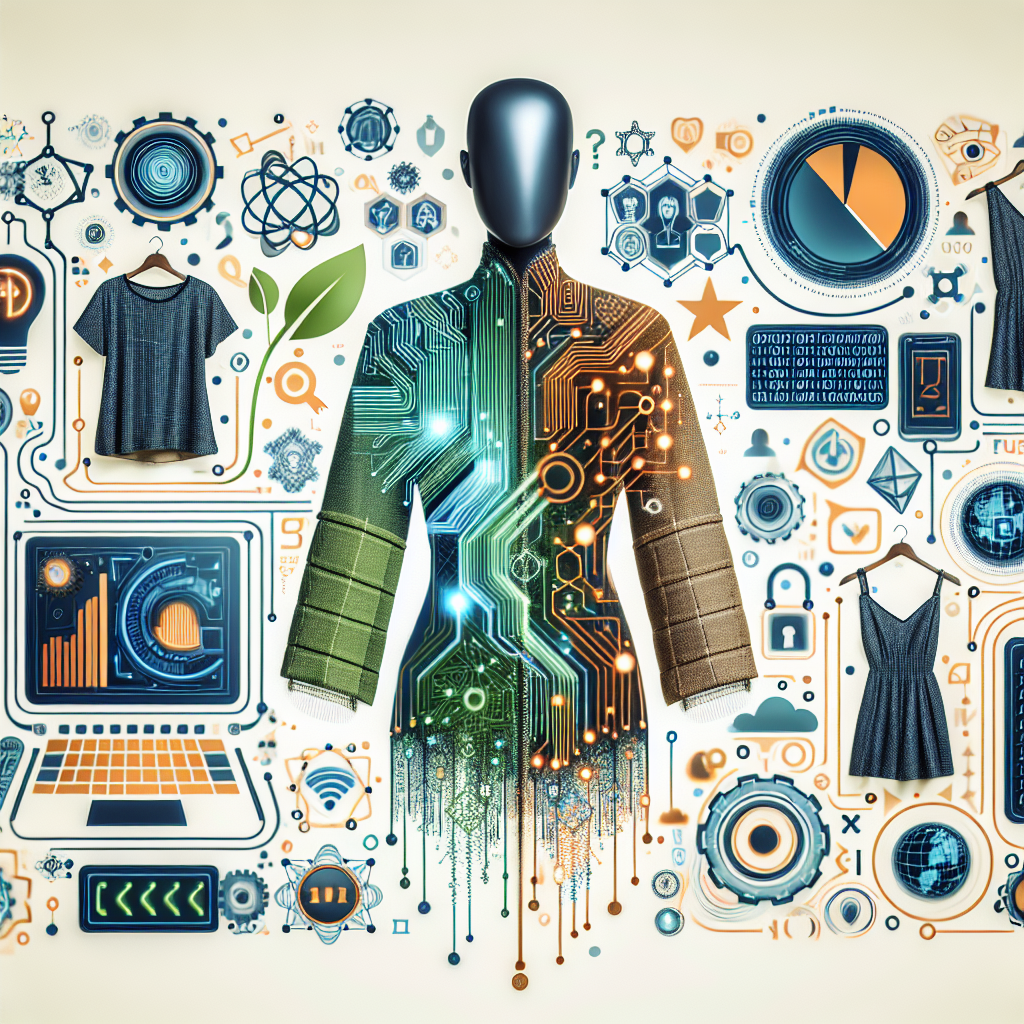Sustainable fashion has become a major trend in recent years as consumers become more conscious of the environmental and social impacts of the clothing industry. From upcycling and recycling to ethical sourcing and fair labor practices, there are many ways that fashion brands are attempting to become more sustainable. However, the latest trend in sustainable fashion is the use of artificial intelligence (AI) to revolutionize the industry.
Sustainable Fashion 3.0 is the next phase in the evolution of the fashion industry, where AI is being used to make the entire production process more sustainable. From design and production to marketing and sales, AI is being used to reduce waste, improve efficiency, and create more environmentally-friendly products. In this article, we will explore how AI is revolutionizing the fashion industry and what this means for the future of sustainable fashion.
How AI is Revolutionizing Sustainable Fashion
1. Design and Production
One of the key ways that AI is revolutionizing sustainable fashion is in the design and production process. AI can be used to analyze data from past fashion trends, customer preferences, and market demand to create designs that are more likely to be successful. This reduces the risk of overproduction and waste, as brands can create products that are more likely to sell.
AI can also be used to optimize the production process, making it more efficient and reducing waste. For example, AI-powered algorithms can be used to determine the most efficient way to cut fabric to minimize waste, or to optimize the placement of patterns on fabric to reduce the amount of material used. This not only reduces waste but also saves time and money for fashion brands.
2. Supply Chain Management
Another area where AI is revolutionizing sustainable fashion is in supply chain management. AI can be used to track and monitor every step of the supply chain, from raw material sourcing to production to distribution. This can help brands ensure that their products are being made ethically and sustainably, by tracking things like labor conditions, carbon emissions, and water usage.
AI can also be used to predict demand and optimize inventory management, reducing the risk of overproduction and excess inventory. This not only reduces waste but also helps brands save money and improve their overall sustainability.
3. Personalization and Customization
AI is also being used to personalize and customize fashion products, creating a more sustainable and customer-centric approach to fashion. By using data analytics and machine learning, brands can create personalized recommendations for customers based on their preferences and buying behavior. This not only improves the customer experience but also reduces the risk of overproduction and waste, as brands can create products that are more likely to sell.
AI can also be used to create customizable products, allowing customers to design their own clothing and accessories. This not only reduces waste by creating products on demand, but also creates a more meaningful and unique shopping experience for customers.
4. Marketing and Sales
AI is also revolutionizing the way fashion brands market and sell their products. By analyzing customer data and behavior, AI can create targeted marketing campaigns that are more likely to resonate with consumers. This not only improves the effectiveness of marketing efforts but also reduces waste by ensuring that products are marketed to the right audience.
AI can also be used to optimize pricing and promotions, helping brands maximize their sales while reducing the risk of overstock and excess inventory. This not only improves the bottom line for brands but also helps reduce waste and improve sustainability.
FAQs
Q: How does AI improve sustainability in the fashion industry?
A: AI improves sustainability in the fashion industry by optimizing the design and production process, reducing waste, improving supply chain management, personalizing products, and optimizing marketing and sales efforts.
Q: How does AI reduce waste in the fashion industry?
A: AI reduces waste in the fashion industry by optimizing the design and production process, creating products that are more likely to sell, tracking and monitoring the supply chain, optimizing inventory management, and creating personalized and customizable products.
Q: How does AI improve efficiency in the fashion industry?
A: AI improves efficiency in the fashion industry by automating and optimizing processes, analyzing data to make more informed decisions, and creating personalized and customized products that are more likely to sell.
Q: What are some examples of AI in sustainable fashion?
A: Some examples of AI in sustainable fashion include using AI-powered algorithms to optimize the design and production process, tracking and monitoring the supply chain with AI, creating personalized and customizable products, and using AI to optimize marketing and sales efforts.
In conclusion, Sustainable Fashion 3.0 is revolutionizing the fashion industry by using AI to make the entire production process more sustainable. From design and production to supply chain management and marketing, AI is being used to reduce waste, improve efficiency, and create more environmentally-friendly products. As consumers become more conscious of the environmental and social impacts of the clothing industry, the use of AI in sustainable fashion will only continue to grow, leading to a more sustainable and ethical fashion industry in the future.

